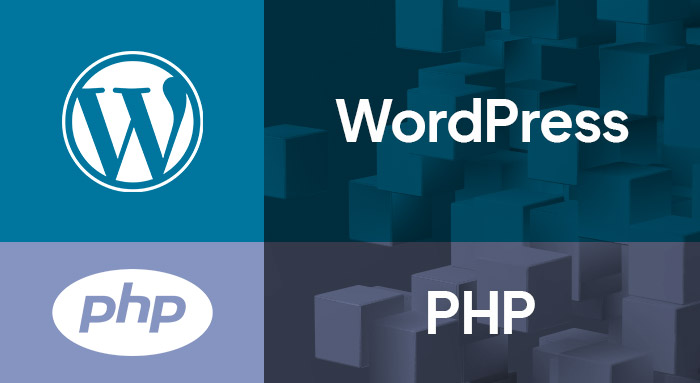How to Update PHP in WordPress: All You Need To Know

PHP is the expression used in WordPress programs and script settings, to create a dynamic and interactive web page. Both the PHP and the WordPress are Open Sources. Since PHP is a program that is used to set the best language in your site, a user needs to request it on their web page. Once you request it, the PHP system is generated by the PHP module and will then be placed on the website servers. The preprocessing used in creating PHP will later produce HTML output presented on the user screens. The PHP processor only creates code that is found in the PHP opening tag.
When dealing with WordPress websites, PHP data will, in most cases, have a PHP extension. The extension is applicable in the HTML document. That does not imply that those who use WordPress need to understand or learn the programming language in order to use PHP. The only time you will need to understand PHP codes is when using action or filters.
The Role of PHP on WordPress
- The use of PHP has the most eminent impact of WordPress on the present sites. The PHP does affect not only the back part of WordPress but also the front part. If you do not get the best system for your site, it will affect your website’s reliability.
- PHP also comes in handy when you are building your WordPress Site as it is used to offer plugins, templates, and files found on the WordPress dashboard. If you do not have a PHP system in place, then your site might not exist. Even if you have a site, it will not be functional.
The Effects of Having Outdated PHP Versions
- All WordPress users should acknowledge that PHP has a significant impact on their website security and performance. But each day, the PHP finds that it has to deal with new security concerns that are emerging. Therefore, those who create the PHP ensure that they create a better and improved version that can handle the security issues better than the outdated PHP versions.
- A new PHP version is updated each year, and it is known to be progressively improved to offer you the best security features. If you use a PHP system out of date, you will not enjoy the security features or the latest language update. Though keeping up with the new PHP version each year is frustrating, you need to do away with older versions to enjoy the security features it offers. Working with an old version will lead to your website is a target for hackers. Thus, it will lead to cybercrime and other malicious activities taking place on your website.
- A new PHP version means that you will enjoy having an updated WordPress dashboard with better features. You can take advantage of these added features to help ensure that your website stands out.
How to Update the PHP System
If you are using versions of WordPress then updating to the latest PHP system is not optional. If you update the website, it will help ensure you get the best performance and the highest security. You might be dreading the migration to the latest version, but as long as you handle it safely, it will not be complex. If you do not update your PHP version carefully, you might break your website’s elements.
Before you switch to the new PHP version, you should make use of the PHP compatibility checker. That will help you know if the newer version of the PHP you want to install is compatible with your website. Keep in mind that a wrong PHP version could lead to your website breaking. In case there are compatibility issues, you can choose to upgrade or downgrade the system.
Create backups before updating the PHP version of WordPress should be a simple game plan, but things might not always go your way. It will save you a great deal when you have a backup in place in case things go sideways. Though the site update is automatic, it is best to have a manual update in place,
- Locally Stage A Copy Of Your Website
Rather than testing the PHP version on your website, have the system tested locally. Run various tests on the staging site so that you can find out if the latest update of the PHP version is compatible with your themes and plugins, if you are sure about the latest version, you can then upgrade to your live site.
- Take Time To Update Everything
You need to ensure that you have everything on your WordPress site up-to-date. When you use the latest PHP versions, you will not have to go around fixing and updating the system manually. All you need is to click on the button that says update, and the system will update itself. It will update the WordPress themes or plugins.
- Confirm The Compatibility
Once you have had the website PHP updated, you need to ensure that the plugin or themes work as needed. You can do this by checking any errors that might represent themselves once the system is fully up to date. The issues you find after the update will vary depending on the features you use on your WordPress Websites.
- You need to go from one page to the next, looking for components that might have stopped operating and find ways to fix them.
- You also need to check each plugin one by one to ensure that they behave as you expect them to.
- Test the features that you find in your active theme. Ensure that everything is working as needed.
- Confirm if you are getting any error messages on your website.
- Update To Live Site
When you are done and are sure that your website is working as required, you should update it on the live websites. The last thing you need is to have a website that is not fully functional to go live, as this will affect the user experience and might give your site a bad image.
Conclusion If you are using the older PHP versions, it might be time for you to get the latest PHP 7.4 for your system. But before updating it, you need to note that it is new and might need to be tweaked. But if you want to enjoy better security and functionality in your website, it might be time for you to update the WordPress programming system you are using.

 Subscribe
Subscribe

